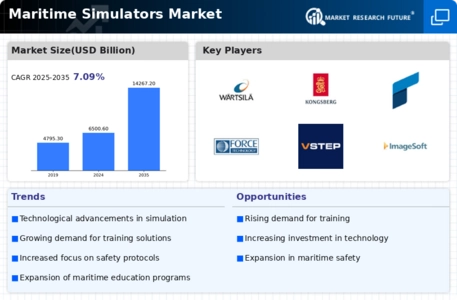Maritime Simulators Market Summary
As per Market Research Future Analysis, the Global Maritime Simulators Market was valued at USD 5,889.34 billion in 2022 and is projected to grow from USD 6,268.07 billion in 2023 to USD 14,267.23 billion by 2035, with a CAGR of 7.09% during the forecast period. The market is driven by the integration of AI, machine learning, and data analytics, enhancing training outcomes and maritime safety. The demand for effective training methods in a complex maritime environment is increasing, as simulators provide a safe platform for skill development and risk mitigation. The hardware segment dominated the market in 2022, contributing around 42% to revenue, while Ship Bridge Simulators led the type segment. The Asia Pacific region accounted for approximately 37% of the market share in 2022, with significant growth expected in China due to its expanding maritime industry.
Key Market Trends & Highlights
The Maritime Simulators Market is witnessing significant growth driven by safety and training needs.
- Market Size in 2022: USD 5,889.34 billion.
- Projected Market Size by 2035: USD 14,267.23 billion.
- CAGR from 2023 to 2035: 7.09%.
- Asia Pacific accounted for ~37% of the market share in 2022.
Market Size & Forecast
| 2022 Market Size | USD 5,889.34 billion |
| 2023 Market Size | USD 6,268.07 billion |
| 2035 Market Size | USD 14,267.23 billion |
Major Players
Wartsila, Kongsberg Maritime, General Dynamics Information Technology, Inc, Rheinmetall, FORCE Technology, VSTEP Simulation.



















